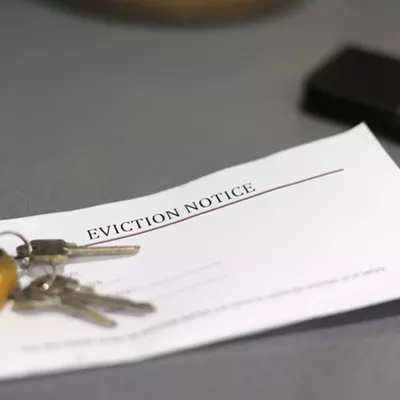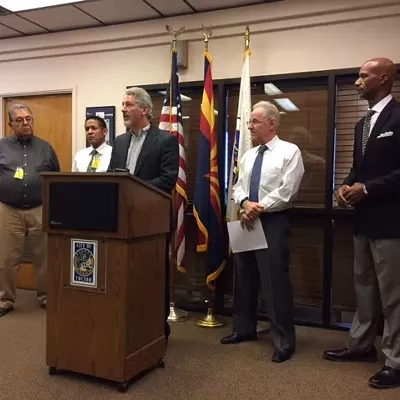Using funds supplied by Pima County, longtime community activist Tres English studied the problem two years ago and issued a report (See "Golden Repairs," July 15, 2004). About local houses built between 1946 and 1979, he now says: "Approximately 17,000 of them need lots of repair work; it's cheaper to fix them than to scrap them, but there's nobody to do the work."
To address the shortage of home-repair workers, English established Teaching and Helping Across Generations. Using $36,000 of federal Community Development Block Grant funds provided by Pima County, along with $8,800 from the Arizona Department of Education, he is coordinating a program which will inspect and repair older homes while teaching a new generation the skills needed to do so.
Classes from the Fred G. Acosta Job Corps Center and a public charter school, AmeriSchools Academy, are now inspecting houses. Meanwhile, English is seeking additional homeowners and inspectors interested in participating in the program.
Recently, and under careful supervision, a group of eight high school-age students from the Job Corps Center gingerly scrambled onto the roof while others checked out utilities in the kitchen of Jim Grant's home south of the UA. Standing nearby, English explains, "The objective is to teach the students how to inspect the house, identify the problems, then fix things."
The 67-year old Grant was raised in the white stucco bungalow and moved back into it 10 years ago after his mother passed away. "I had some work done then," he recalls, "like having new carpeting installed, some painting and a few other cosmetics." But, Grant acknowledges the house has major roof and gas-line problems he can't afford to fix since he's retired.
In a similar situation is 43-year old Abby Rosa. Disabled, she states flatly, "I don't have any money."
Rosa purchased her 1948-era midtown home about seven years ago, and has only been able to afford minimal roof repairs since then. After her house was inspected by students involved with English's program, with more than a tinge of irony in her voice, she says: "I was very excited to learn I have roof problems right over my bed. But I guess I'd rather know than not know."
Despite the sobering news she received about her home, Rosa is glad she participated in the program. "It helps the kids learn how to do things," she points out, "and (become) expert at what to look for. I'm very grateful for the opportunity to help."
In addition to inspecting the homes, students will eventually be making minor repairs to them. That, believes AmeriSchools teacher Alex Dely, is just what those enrolled in his construction engineering class need.
"It's a lot of hands-on experience," Dely indicates, adding that English's program is one step in reaching the class' objective. "The students should get enough familiarity with math and other skills," he says, "so that with additional training, they can design and build their own home."
English believes teaching high school students the home-repair business can be the start of a major economic upgrade for the community. "The bigger goal for the program," he says, "is to develop a housing redevelopment industry in Tucson."
Based on his earlier study, English estimates there are thousands of central city, post-World War II homes with major roofing, utility or furnace problems. "The houses are structurally sound," English concludes, "because they're masonry construction. They're not falling down; they just need some work.
"We can transform that problem into a major (economic) opportunity," English continues. Believing hundreds of people could be employed to produce the parts needed to repair older homes, along with hundreds more working to actually do the work, he foresees the redevelopment industry becoming a major player in the Tucson economy.
"Right now," English says, "there are a wide variety of barriers," to this concept. "Many of the homes that need repair are occupied by poor people who can't afford to fix them. There are regulatory hurdles, because our building codes are not set up to make small-scale projects easy." Plus, English adds, "We don't have enough workers."
About the number of skilled home-repair specialists, English says, "It's really a problem, and it's only going to get worse. The average age for remodelers is (older than) 50."
If programs like his and others in town succeed in encouraging more young people to enter the home-maintenance profession, English thinks Tucson will be the winner. "We need to start by repairing and upgrading what we have," he says.
Assuming that effort is initiated in a big way, English believes tens of millions of dollars will flow into the local economy.
"If we choose to act," English writes enthusiastically in his report, "we can create a half-billion-dollar per year Redevelopment Industry Cluster that can transform Tucson into a sustainable 21st century community and put Tucson in the forefront of one of the great transformations in the nation's history."










